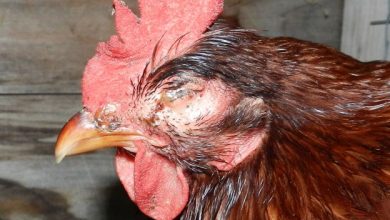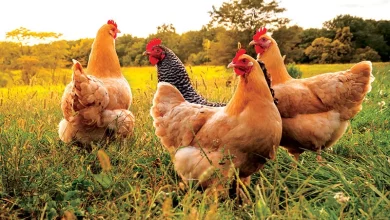Colibacillosis in poultry, its diagnosis, prevention and control

Dr. Prabjot Singh (MVSc), Dr. Shilpa Sood(Associate Professor), Dr. Nawab Nashiruddullah (Professor), Dr. Shafiqur Rahman(Assistant Professor), Dr. Sankalp Sharma (PhD Scholar), Dr. Satuti Sharma (PhD Scholar), Dr. Deepshikha Bali (PhD Scholar), Division of Veterinary Pathology, F.V.Sc & AH, SKUAST-Jammu, J&K, India (181102).
INTRODUCTION
Avian colibacillosis is an infectious disease of birds caused by Escherichia coli, which is considered as one of the principal causes of morbidity and mortality in all age groups. It is associated with heavy economic losses to the poultry industry causing mortality and decrease in productivity of the affected birds. E.coli can be a primary invader or it can also act as a secondary opportunist pathogen. Infectious bursal disease (IBD), mycoplasmosis, coccidiosis, newcastle disease or infectious bronchitis, as well as nutritional deficiencies all predispose the birds to this disease. It is a gram-negative, non-acid-fast, non-spore-forming bacillus that grows both aerobically and anaerobically. It causes a variety of disease manifestations in poultry including yolk sac infection, omphalitis, respiratory tract infection, swollen head syndrome, septicemia, polyserositis, coligranuloma, enteritis, cellulitis and salpingitis.
TRANSMISSION
E.coli is transmitted to chickens through ingestion, inhalation, or secondary to fecal contamination of eggs hatched in an incubator. E.coli infection has a cosmopolitan distribution. Its presence in drinking water is considered indicative of fecal contamination. Dust in poultry houses may also cause infection in poultry. Pathogenic serotypes of E. coli can also be introduced into poultry flocks through contaminated well water.
CLINICAL SIGNS
Birds affected with E. coli infection have ruffled feathers, show lethargy and poor growth. Colibacillosis can cause severe diarrhea, stunted growth, inactivity, lack of appetite and water consumption, sneezing, coughing, gasping and respiratory distress,
GROSS LESIONS
Colibacillosis of poultry is characterized in its acute form by septicemia resulting in death and in its subacute form by peri-carditis, airsacculitis and perihepatitis. Post-mortem reveals cloudy and thickened air sacs (air sacculitis), congested and thickened liver capsule and presence of whitish layer on the capsular surface (perihepatitis), presence of fibrin layer on pericardial surface (pericarditis) and congested and consolidated lungs in the affected chickens. Spleen is enlarged or may be severely congested. There may be presence of mucus, congestion and haemorrhage in the intestinal tract (enteritis). The caecal tonsils may be haemorrhagic.
MICROSCOPIC LESIONS
The liver shows coagulation type of focal necrosis, infiltration of heterophils, lymphocytes, and macrophages mainly in portal area. Perihepatitis is commonly seen and is characterized by presence of varying amounts of fibrin seen as eosinophilic fibrillar material and heterophilic exudate. Spleen may show scattered pyknosis of lymphocytes and RE cell proliferation. Pericarditis is characterized by thickening of pericardium due to infiltration of heterophils. There may be severe congestion of lungs, infiltration of heterophils, macrophages and lymphocytes in the wall of the bronchus, peribranchiolar areas and in the alveoli. In duodenum, there is severe desquamation of intestinal mucosa, infiltration of heterophils, and other inflammatory cells like lymphocytes and macrophages in the submucosa.
DIAGNOSIS
Colibacillosis causes typical pathological lesions as described above, which can be seen during postmortem examination of affected birds. Isolation of a pure culture of E. coli from the heart, lungs, liver, or airsacs confirms the diagnosis. Aerobic culture yields colonies of 2-5mm on both blood and Macconkey agar after 18 hrs. Most strains are rapidly lactose-fermenting producing pink colonies on McConkey agar. It can also be diagnosed by FAT, ELISA and PCR technique.
TREATMENT
Antibiotics are extremely important tool in combating colibacillosis. For the treatment of colibacillosis, gentamicin, neomycin, oxytetracycline, amoxicillin, enrofloxacin and ciprofloxacin are frequently used.
PREVENTION AND CONTROL
A first step is the prevention of egg contamination by fumigating the eggs within two hours after lay, and by removing cracked eggs or eggs soiled with faecal material. It is recommended to vent the incubators and hatchers to the outside and to have as few breeder flocks as possible per breeding unit.
In chicks, contamination with avian pathogenic E. coli from the environment must be controlled by reduction and control of intestinal infection. Birds also need to be protected against pathogens that promote infections with APEC. This is possible by using Mycoplasma-free birds and protecting the birds against mycoplasmosis and viral diseases by vaccinations. Disease introduction must also be avoided by a suitable house infrastructure, the correct use of a transition zone (for changing clothes and shoes, and washing hands), and pest control: rodent faeces are a source of pathogenic E. coli. Bird density, humidity, ventilation, dust and ammonia must be controlled. The great diversity among avian pathogenic strains limits the possibilities of vaccination. Several vaccines based on killed or attenuated strains have been tested experimentally. In general, they give sufficient protection against infection with homologous strains, but heterologous strains are not usually covered. Vaccines using virulence factors like fimbriae, also give a good protection against the homologous strains possessing the same type of fimbriae.
STRATEGIES FOR REDUCING PUBLIC HEALTH HAZARDS.
The following approaches can minimize public health risk: proper cleaning and ventilation of poultry houses and chlorination of drinking water. Maintaining good personal hygiene is also important like washing hands before and after handling and processing carcasses and cooking, avoiding eating raw or undercooked poultry and maintaining the correct internal cooking temperature especially.

